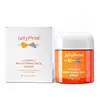What's inside
What's inside
 Key Ingredients
Key Ingredients

No key ingredients
 Benefits
Benefits

 Concerns
Concerns

No concerns
 Ingredients Side-by-side
Ingredients Side-by-side

Water
Skin ConditioningPropylene Glycol
HumectantEthylhexyl Isononanoate
EmollientButylene Glycol Palmitate
EmollientEthyl Aspartate
Skin ConditioningSorbitan Olivate
EmulsifyingCyclomethicone
EmollientDisiloxane
Skin ConditioningAlcohol
AntimicrobialAsparagus Officinalis Extract
Skin ConditioningNitrous Oxide
3-O-Ethyl Ascorbic Acid
Skin ConditioningAscorbic Acid
AntioxidantXanthan Gum
EmulsifyingGlucose
HumectantIsopropyl Alcohol
SolventHydroxyacetophenone
Antioxidant1,2-Hexanediol
Skin ConditioningWater, Propylene Glycol, Ethylhexyl Isononanoate, Butylene Glycol Palmitate, Ethyl Aspartate, Sorbitan Olivate, Cyclomethicone, Disiloxane, Alcohol, Asparagus Officinalis Extract, Nitrous Oxide, 3-O-Ethyl Ascorbic Acid, Ascorbic Acid, Xanthan Gum, Glucose, Isopropyl Alcohol, Hydroxyacetophenone, 1,2-Hexanediol
 Reviews
Reviews

Alternatives
Ingredients Explained
These ingredients are found in both products.
Ingredients higher up in an ingredient list are typically present in a larger amount.
1,2-Hexanediol is a synthetic liquid and another multi-functional powerhouse.
It is a:
- Humectant, drawing moisture into the skin
- Emollient, helping to soften skin
- Solvent, dispersing and stabilizing formulas
- Preservative booster, enhancing the antimicrobial activity of other preservatives
Water. It's the most common cosmetic ingredient of all. You'll usually see it at the top of ingredient lists, meaning that it makes up the largest part of the product.
So why is it so popular? Water most often acts as a solvent - this means that it helps dissolve other ingredients into the formulation.
You'll also recognize water as that liquid we all need to stay alive. If you see this, drink a glass of water. Stay hydrated!
Learn more about Water